Over the last few years Hokkaido has developed a well-deserved reputation as a paradise for food lovers, with people coming from all corners of the globe to try foods like Sapporo’s Miso Ramen and Jingisu-Kan lamb barbeque. As the number of foreign visitors grows, so too do the worries and questions about navigating the cafes, pubs and restaurants of Japan’s snowy north. In today's blog, I, expert eater Zac, will share the ins-and-outs of eating out in Hokkaido, including the types of restaurants, how to pay and navigating dietary restrictions.
A Local's Guide to Eating Out in Hokkaido
Travel Tips
By Zac

This blog will cover the various things to keep in mind when dining out in Japan but if you're looking for our recommendations on what to eat in Hokkaido, the team has put together their favourite foods in one handy blog for you. Be sure to try out my favourites - funky Izushi and slippery Matsumaezuke!

Ordering and Payment
The second you walk into a restaurant in Japan, you’ll be greeted with an irrashaimase! ("Welcome!") and typically asked how many there are in your group. Check out the Useful Phrases section below for how to respond in Japanese, but when in doubt, consider showing how many people there are in your group with your fingers when you are greeted by staff. Sometimes, particularly at ramen restaurants, you’ll have to order your meal at a vending-machine before being shown to your seat. Once you order from the machine, you will either be shown a seat or told to sit anywhere you like. If you’ve ordered from a vending machine, you will typically have to pass the tickets with your order to one of the wait staff or the kitchen staff, if there are no wait staff.

If you didn’t pay at a vending machine or when you first entered the restaurant, then it goes without saying that you’ll be paying on your way out - but depending on the type of restaurant you’ll either pay at your table or at a central register near the front of the restaurant. While that seems obvious, at some types of restaurants - particularly conveyor-belt sushi and izakaya - you will need to call a waiter over to calculate your order before paying at a central till before heading out.
Tipping, as well as letting the waiter keep the change is often said to be rude in Japan, but in reality it’s really just confusing. Tipping is not a part of Japanese culture, both in restaurants and hotels, and if you try to do so you’ll likely end up with some confused looks! But while tipping in Japan is unheard of, Japan does have its own unique service charge when dining out - O-toshi. When eating at an Izakaya (a small Japanese bar, serving small plates of food and amazing sake), expect a small plate of food to be put on your table when you sit down, which is essentially your cover charge. You will be charged whether you eat the food or not, so don’t be surprised to find it on your final bill when you pay.
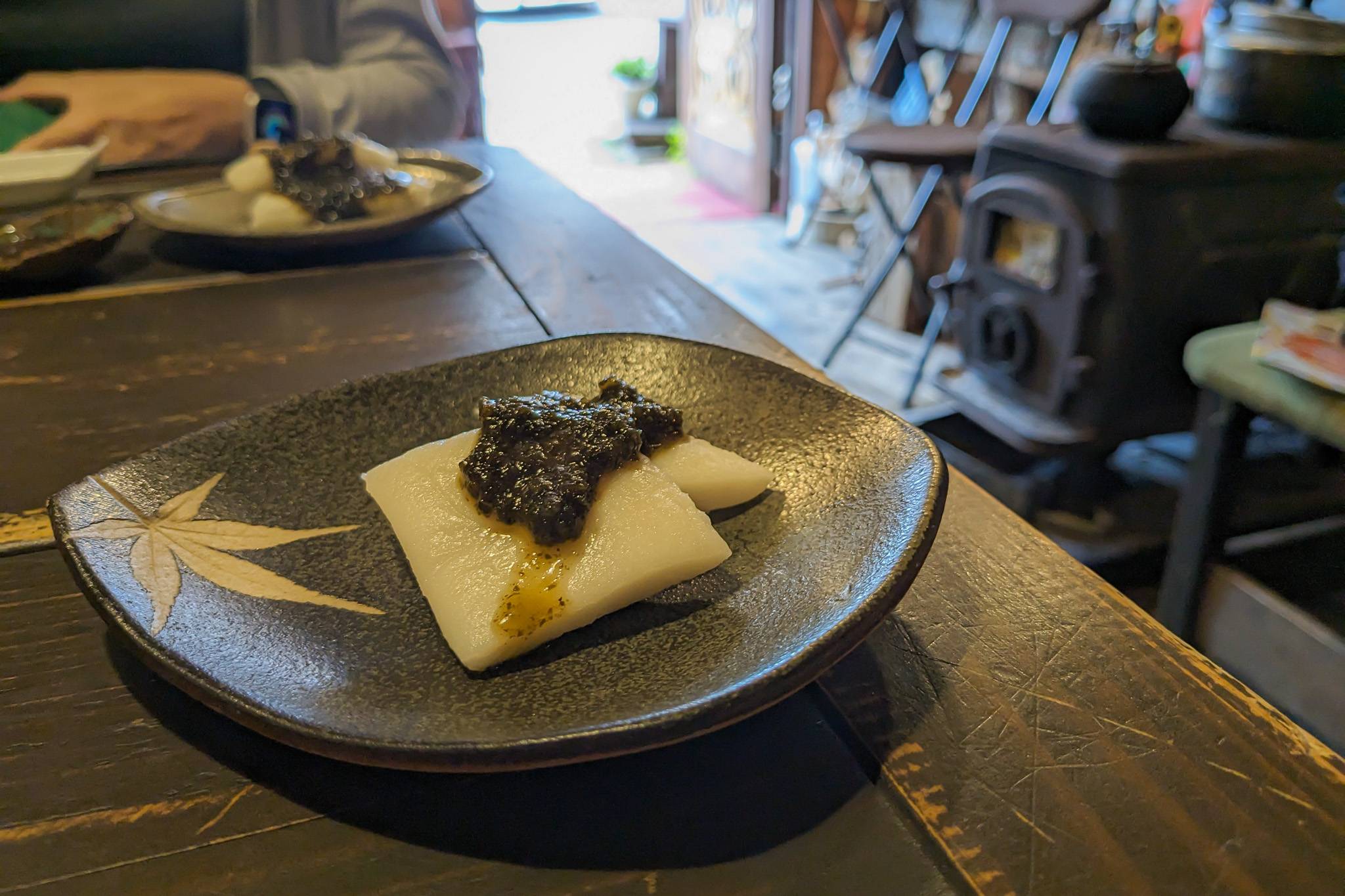
Despite credit cards becoming widespread in Japan over the last decade, many restaurants - particularly those that have you order from a vending machine or tiny, family-run restaurants in the countryside - are still cash only. A good rule of thumb is to always keep enough cash on hand to cover expenditures, even if you intend to use a credit card. This rule applies to petrol stations, public transport and all other kinds of situations in Japan as well! Restaurants that do accept cards tend to accept Visa and Mastercard, and Union Pay tends to be accepted in many of the areas of Hokkaido popular with travellers. American Express on the other hand is not often accepted.
There are a number of miscellaneous quirks with eating out in Japan as well, some of which you’ll notice from the moment you sit down. Oftentimes you’ll be given a serviette and a pair of disposable chopsticks. Sometimes you’ll only be served tea instead of water. In fact, sometimes you won’t be served any drinks at all! If that's the case, any water or tea are likely self-service and if you can’t see a water server anywhere, call over a waiter with a well practised Sumimase~n! (“Excuse me!”)
On that topic, while yelling out to get a waiter’s attention might get you a room full of disapproving stares in your home country, it’s standard practice here in Japan and once you’ve mastered the art of letting your Sumimase~n! ring off towards the end, you’ll be ordering like a local in no time!
Of course, yelling to call your waiter over isn’t the only sound that takes some getting used to… The symphony of slurping soups and noodles is another thing to expect when eating out in Japan. While this often is said to be good manners, it has more to do with cooling off piping hot food while also being said to increase the flavour, smell and mouthfeel of the food.
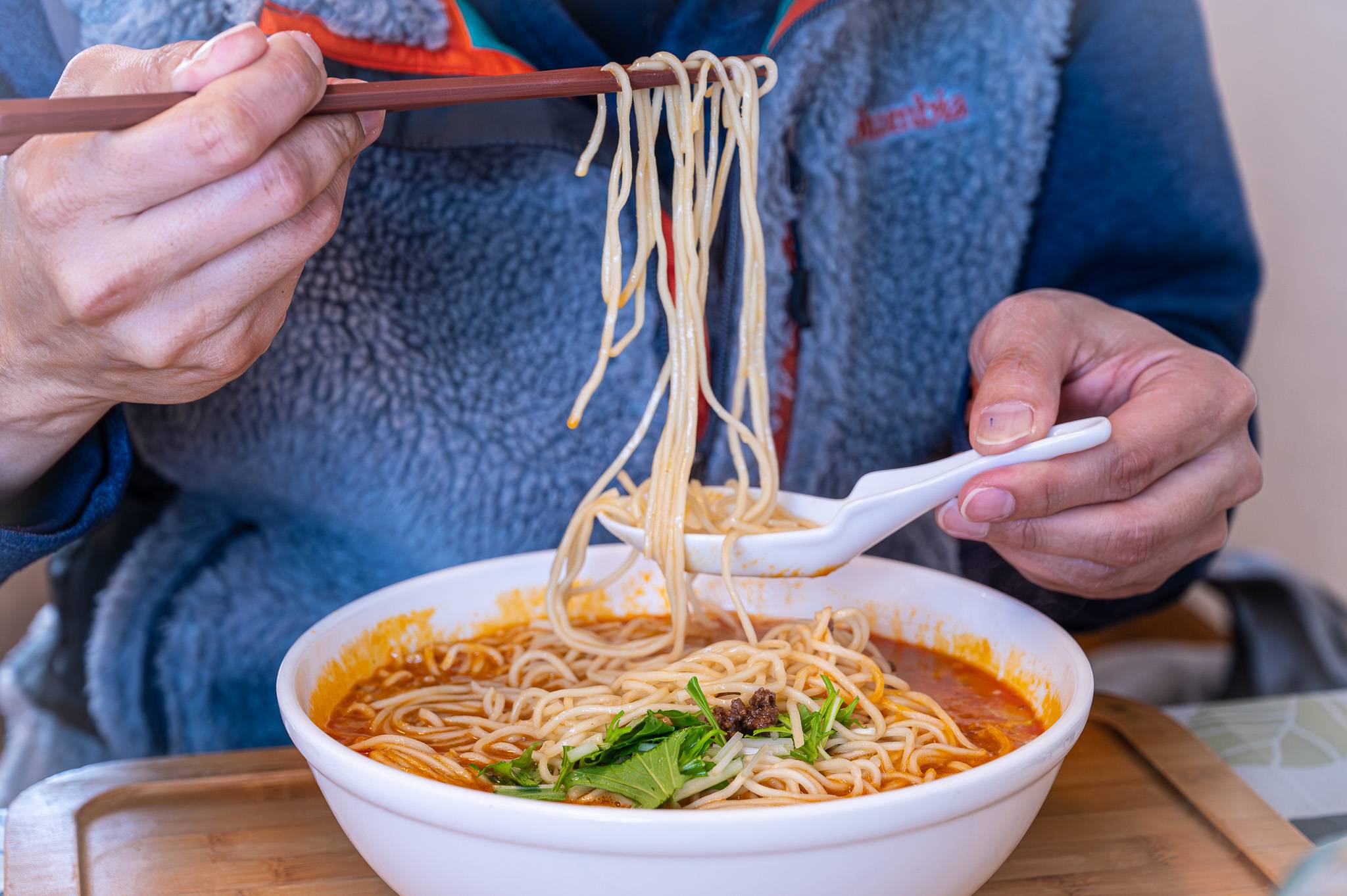
Useful Phrases
| Japanese | English | |
|---|---|---|
| Manseki desu | We are full. | Sometimes staff will do this while making an X-shape with their arms as well! |
| Genkin-nomi | Cash Only | |
| (number)-mei desu | (number) People | When in doubt, be sure to show the staff with your fingers as well. Japanese people also do this! |
| ichi | One | |
| ni | Two | |
| san | Three | |
| yon | Four | |
| go | Five | |
| Kitsuen | Non-smoking | |
| Kin-en | Smoking | |
| O-kaikei onegaishimasu | The bill, please. | |
| (item) onegaishimasu! | (Item) please! | |
| omizu | Water | |
| ocha | Green Tea | |
| nama-biru | Draft Beer | |
| bin-biru | Bottled Beer | |
| kore | This (thing) | Feel free to point at the menu and say ‘kore’ if you don’t know the Japanese word, or if you see a photograph of a meal you’d like! Again, Japanese people sometimes do this too. |
Types of Restaurant
Izakaya
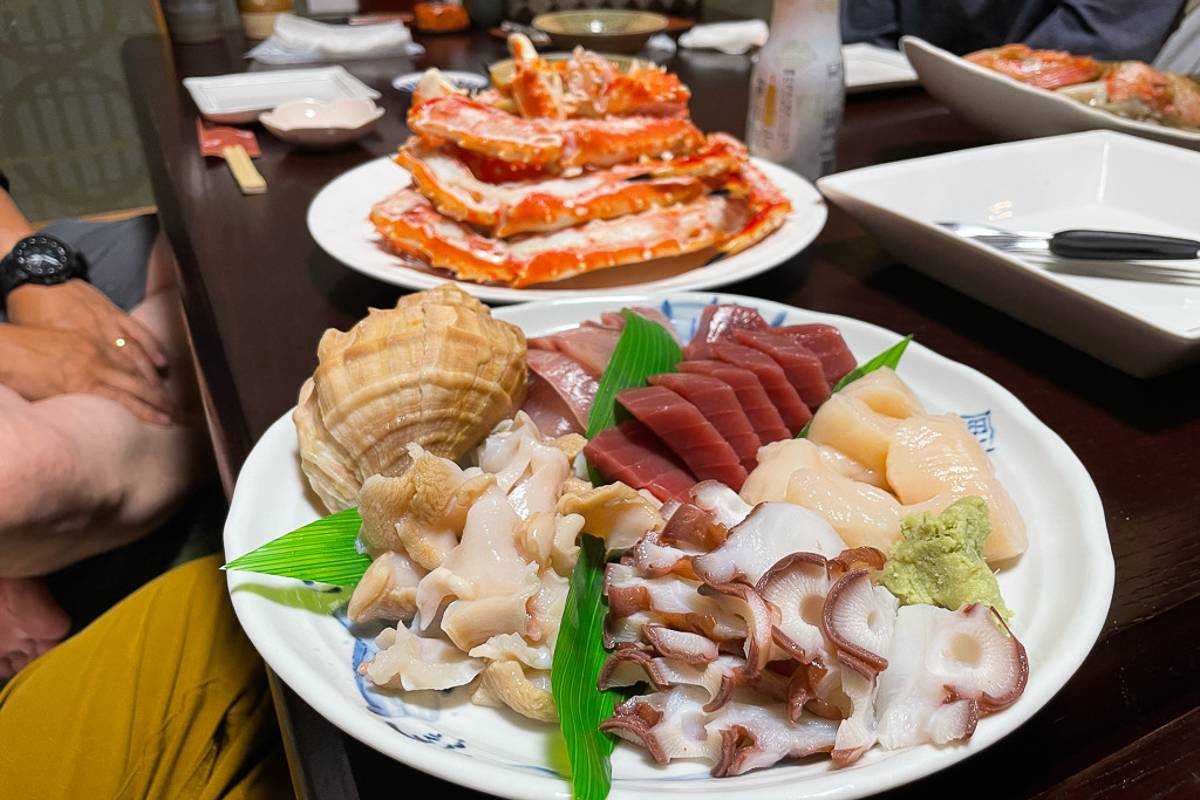
Izakaya are often translated as "Japanese Style Pubs", but are more like a cross between a pub and a tapas bar. The types of food available at Izakaya varies greatly, but many of the Izakaya staples - karaage (Japanese Style Fried Chicken), french-fries, and edamame are common across most izakaya in Japan. Since portion sizes are smaller and meant to be shared among a few people (similar to tapas), Izakaya are a great place to expand your comfort zone and try a variety of local foods. Food is ordered in rounds, and all-you-can eat as well as all-you-can-drink plans are commonplace. You can expect to pay around 2500 yen per person for a hearty Izakaya meal. Take note that when ordering all-you-can-eat or all-you-can-drink, it is usually for a set time, with the final call for food and drinks typically being 15 minutes to a half hour before your time is up. It goes without saying that you should only order the amount you can actually consume, leaving as little left-overs as possible.
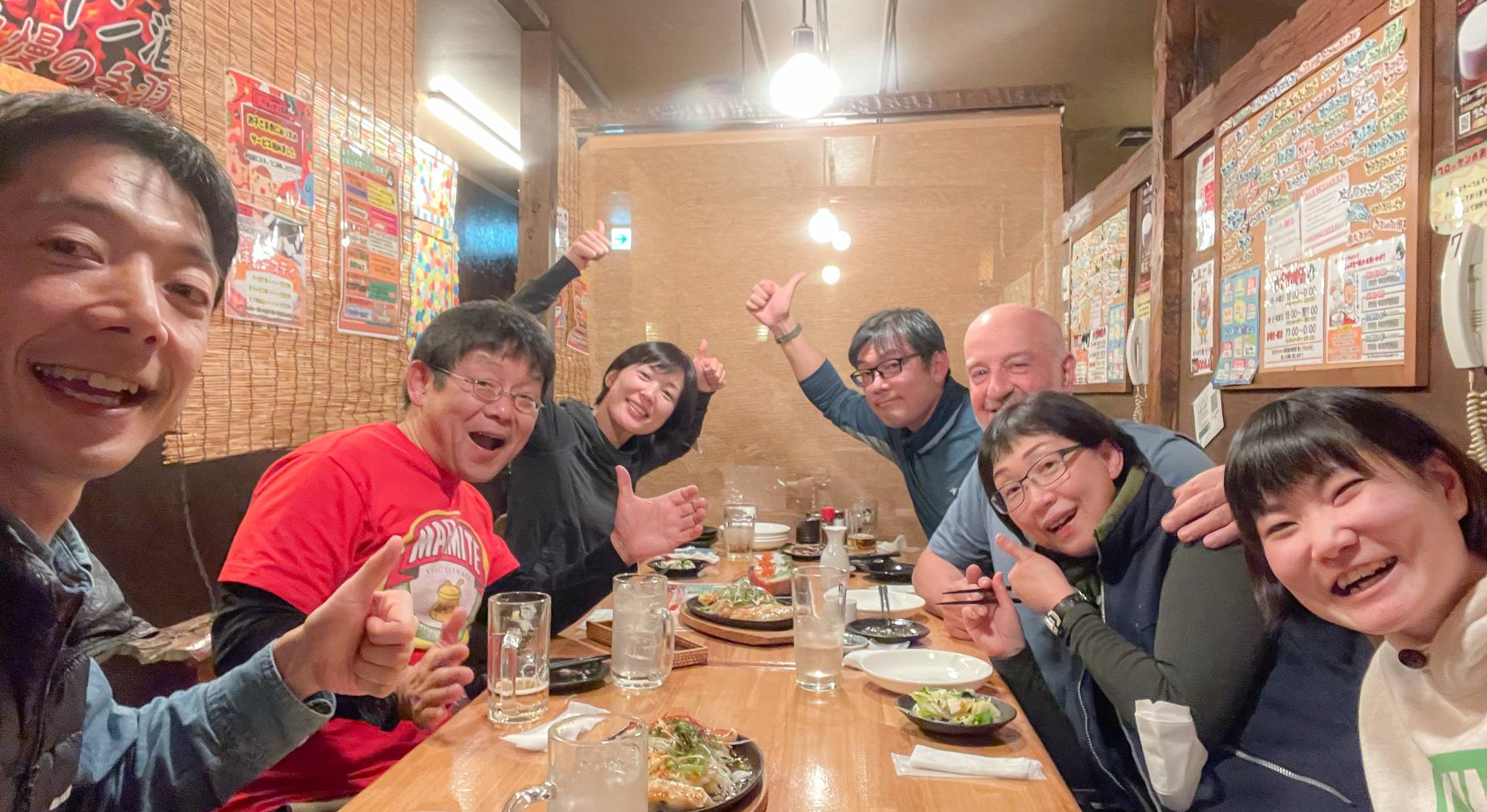
Hokkaido’s Izakaya have no shortage of foods unique to Hokkaido, including buttered baked potatoes, Ramen Salad and Atka Mackerel, known as hokke in Japanese. You’ll also see many Robata Izakaya across Hokkaido, where you grill a variety of seafood and vegetables on a grill over an open flame. This style of restaurant was popularised in Kushiro, and has picked up popularity across all of Hokkaido.
Ordering with a touch panel is common at many chain Izakaya such as Tsubohachi and Ouman (both native to Hokkaido) and sometimes, touch panels have multilingual options. However, local, family-run Izakaya may not have English menus or any English signage at all, so be prepared to make yourself understood with body language, pointing and a joke or two!
Teishoku
Teishoku are set meals, characterised by a main dish with rice and soup on the side and occasionally, Japanese pickles or a small salad as well. While there are dedicated teishoku restaurants, you’ll find many restaurants serve some sort of teishoku, often called setto (from the English word, "set"). Teishoku with stewed or grilled fish, fried chicken, or stir-fried pork paired with rice and miso-soup are commonplace across all of Japan, but in Hokkaido, teishoku with freshly baked bread, hearty western-style main dishes and side soups like cream of corn or onion soups aren’t hard to find either! Typical teishoku restaurants in Hokkaido also tend to have a Hokkaido-twist, with main dishes featuring Jingisu-Kan lamb barbeque (a Japanisation of the word “Genghis Khan”) or buta-don, grilled pork over rice. Local fish salmon or atka mackerel also often make an appearance (note that fish in Japan is almost always served with the bones still attached) as does fresh sashimi! The average price point ranges greatly, usually between 700 to 1200 yen.

Cafes & Bakeries
Hokkaido has no shortage of bakeries and cafes, making great spots to stock up on bread for a hike or to plan your next few days over a cup of coffee.
When visiting a bakery in Japan, there will usually be trays and tongs by the door for you to take the bread you like and bring to the register. Hokkaido’s bakeries are no different than their mainland counterparts, but there are a number of unique breads you may stumble across such as chikuwa-pan, a dinner roll wrapped around a fish cake, or yokan-pan, bread coated with sweet bean paste and often filled with whipped cream. A piece of bread at a bakery can set you back 100 to about 350 yen depending on whether it’s a local store or a boutique bakery, with cakes costing a bit more. Some bakeries offer the option to eat in with a set containing coffee or tea, as well.

Something to keep in mind is that Japanese bread tends to be much sweeter and softer than it is in many Western countries, perhaps closer to a brioche than what you might know as bread. Domestic Japanese consumers don’t like a hard crust, so don’t be surprised if that crunchy-looking sandwich you’re eyeing up turns out to have a deceptively soft bite! Additionally, vegans and those with a lactose intolerance should be aware that milk and eggs are commonly used in Japanese breads to give it a squishiness and sweetness that appeals to the Japanese palate.

You’re never far away from a cafe in Japan. While many international conglomerates such as Starbucks operate in Japan, Japanese chains such as Tully’s or Doutor are found throughout the train stations and city streets of the country. Local cafes aren’t hard to come by in any part of the country, including Hokkaido. Most coffee in Japan is made using a drip, but local roasters may have espresso drinks as well. Those who can’t have caffeine should be cautious when entering small, local cafes as decaffeinated drinks are often not served and sometimes, coffee might be the only option on the menu! However, lattes, including Japanese variants using matcha or roasted green tea are often available as well. Note that outside of chains, however, non-dairy milk like soy milk or almond milk are hard to find. A cup of good coffee will usually set you back 300 to 500 yen.

Sushi
Generally speaking, sushi restaurants can be divided into conveyor-belt sushi restaurants and more formal sushi restaurants where you can order a set number of nigiri (small balls of rice with a slice of raw fish on top).
Conveyor Belt sushi restaurants allow you to try a variety of different sushi at a very reasonable price point- ranging from 110 yen to 500 yen per plate depending on the type of sushi. There is usually a large side-menu with fried foods and soups to choose from as well. Most of the large chains popular throughout Japan offer touch-panel ordering, but many of Hokkaido’s local revolving sushi restaurants require you to write your order on a piece of paper to hand to staff. Unfortunately many of these restaurants only offer Japanese menus, but Nemuro Hanamaru has multilingual menus at its locations across Hokkaido.
Other more typical sushi restaurants tend to have a set with a certain amount of nigiri, with the option to order a-la-carte or kaisen-don, where the sashimi is served over a bowl of rice as opposed to individual pieces of vinegared rice. The price point of these restaurants can range greatly from 1500 yen up to 3500 yen. Whether you opt for revolving sushi or a more traditional experience, be sure to try some Hokkaido staples - such as fresh salmon, salmon roe, scallops, crab and sea urchin.

Useful Phrases
| Japanese | English | |
|---|---|---|
| Izakaya | A Japanese style pub, with extensive food and drink menus. | |
| Teishoku | A set meal typically consisting of a main dish, rice, soup and often pickles. | |
| Kaiten-Zushi | Revolving Sushi/ Conveyor Belt Sushi | |
| Ten-nai | Eat-in | |
| Omochikaeri | To-go / Takeaway | The English phrase “Take Out” is becoming more and more widespread, especially in large cities. |
| Koagari | An elevated space with tatami mats and floor-seating. | You will have to take your shoes off if sitting at a koagari. |
| Kaunta | Counter seating, often found at ramen shops and izakaya. | From the English, “counter”. |
| Nomihoudai | All-you-can-drink | |
| Tabehoudai | All-you-can-eat |
Dietary Requirements
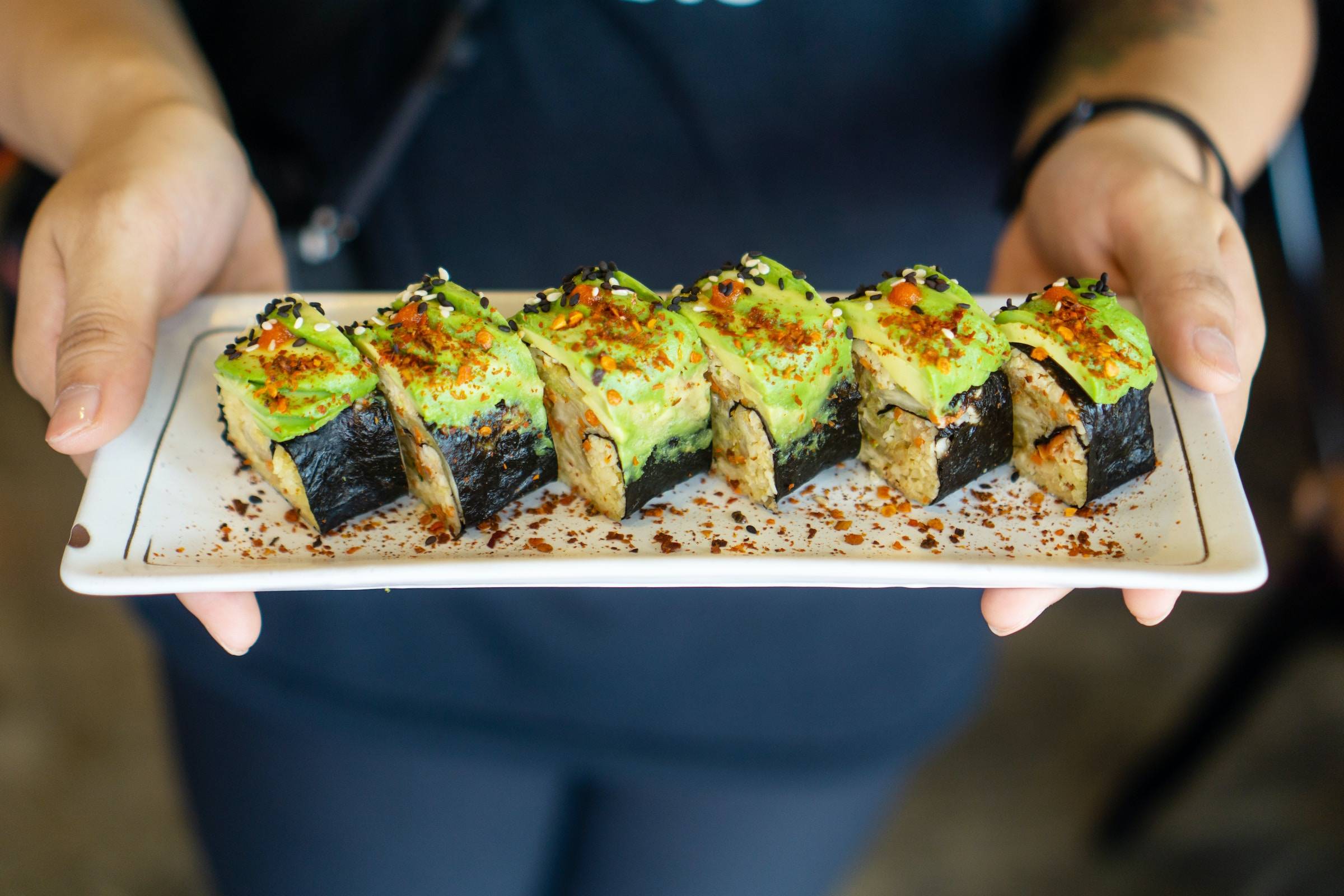
We’ve covered eating out in Japan as a vegan or vegetarian in another blog that is a must-read if you are keen to avoid meat during your trip to Hokkaido. The key takeaway from that blog is that pure vegan and vegetarian cuisine is still very hard to come by in Hokkaido. While avoiding meat is manageable, avoiding animal byproducts altogether is extremely difficult due to dashi fish stock, which is the foundation for most Japanese cooking. Dashi is usually made of skipjack tuna and finds its way into everything from convenience store rice balls to seemingly vegetarian miso soup. For more information on the other vegan-unfriendly foods hiding in plain sight, be sure to read the rest of our vegan blog (once you’ve finished this one!)
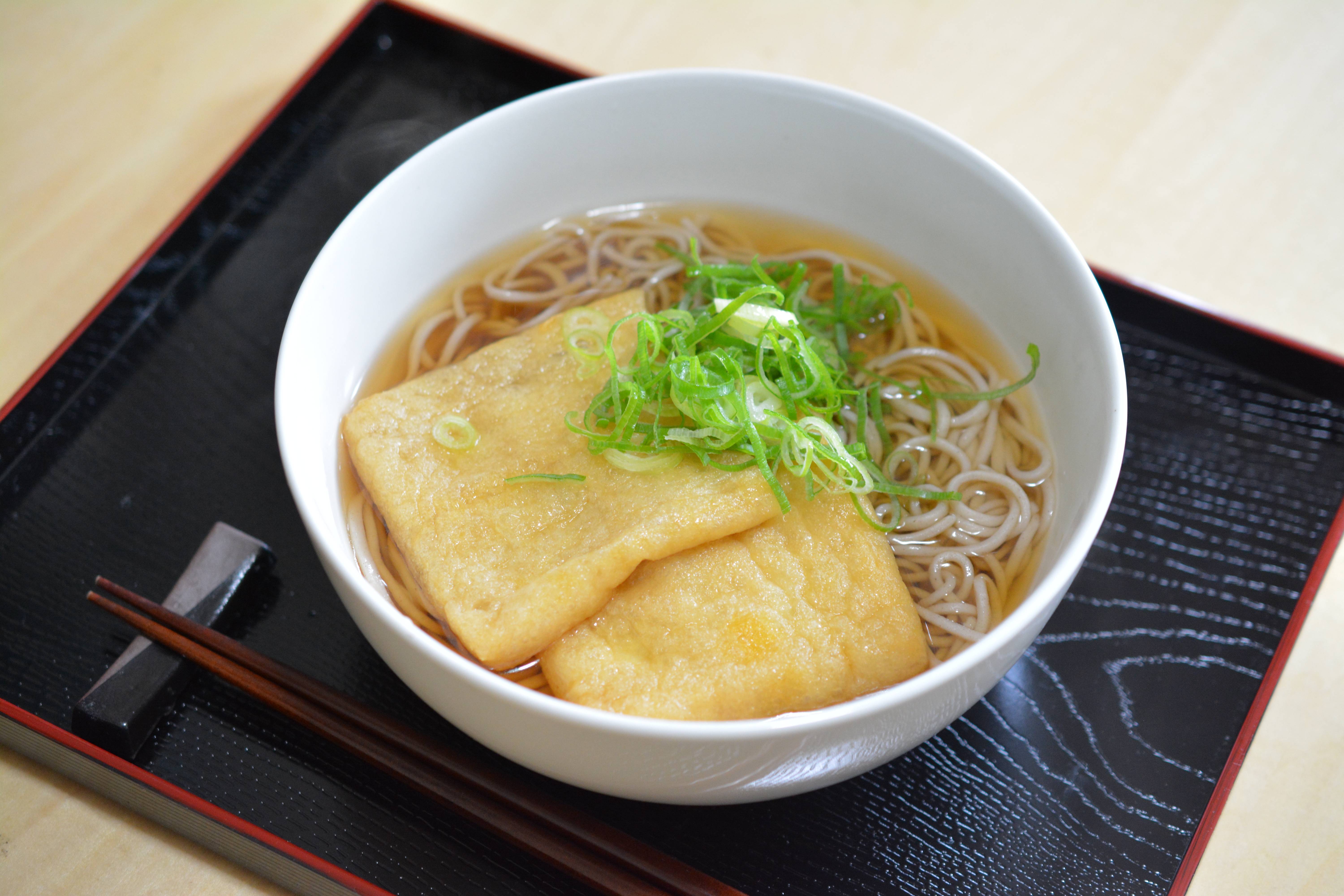
Gluten also has a way of hiding in plain sight, finding its way into another staple of Japanese cooking - soy sauce. While the major soy sauce makers such as Kikkoman sell gluten free soy sauces in their North American and European markets, in their home country of Japan it has yet to even be put on store shelves. Unfortunately, as with dashi, soy sauce works its way into the majority of Japanese cooking, so avoiding it is a huge challenge, especially in rural Japan.

If your dietary restrictions are only a preference, we highly recommend relaxing them while you are in Japan to make eating in Japan the enjoyable experience it should be. If your dietary restrictions are serious and cannot be avoided, then you can actually breathe a sigh of relief as allergies are taken extremely seriously in japan. Japanese culture is very risk-averse, and many are frightened of the idea of being held responsible for a medical emergency. While most of the time this means that restaurants will go out of their way to be extremely attentive to your needs, it also means that those with more complicated allergies (for example, an allergy to prawns that is so severe that your food cannot be prepared on a cutting board that has ever touched a prawn), you may be politely turned away.
In Japan there are 28 allergens that are legally required to be labelled on menus, packaged foods and at buffets. The Consumer Affairs Agency of Japan has created a handy printable checklist that you can print out and show to restaurants, assuming your dietary restrictions are limited to the 28 allergens (one thing to note is that wheat is one of the 28 allergens, but gluten is not so if you have a gluten intolerance, avoid using this checklist). If your dietary needs are more complicated or more severe, you’ll have to put some work into communicating those needs very clearly not just to restaurants and hotels, but your AH guides and our customer service team as well.
Useful Phrases
| Japanese | English |
|---|---|
| Niku wa taberemasen. | I cannot eat meat. |
| Nyuto-futaisho | Lactose intolerance |
| Guruten-futaisho | Gluten intolerance |
| Seriakku-byo | Coeliac Disease |
| (allergen) no arerugi ga arimasu. | I am allergic to (allergen). Check the table below! |
Common Allergens in Japanese
| Japanese | English |
|---|---|
| Kai | Shellfish |
| Nyuseihin | Dairy products |
| Nattsu | Nuts |
| Tamago | Egg |
| Komugi | Wheat |
| Soba | Buckwheat |
Ready to dig in?
Restaurants in Japan can be intimidating, but the occasional confusing vending machine and daunting kanji-laden menu is no reason to hide in your hotel room and eat convenience store food in a country known for its amazing cuisine! With the prevalence of translation apps and the increasing number of restaurants growing accustomed to welcoming non-Japanese guests, enjoying off-the-beaten-trail restaurants has never been easier. Still, if you’d like that little extra support and some insider tips to experience the very best of Hokkaido’s food, you can always rely on our tours to tickle your taste-buds and leave gourmet-lovers grinning!
Well, as we say in Japan… Itadakimasu! (“Let’s eat!”)
Take a look at our Self-Guided Tours!
Explore Hokkaido under your own steam. Check out our full list of Self-Guided Tours!